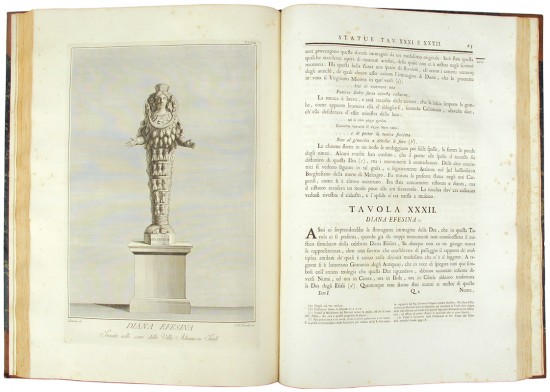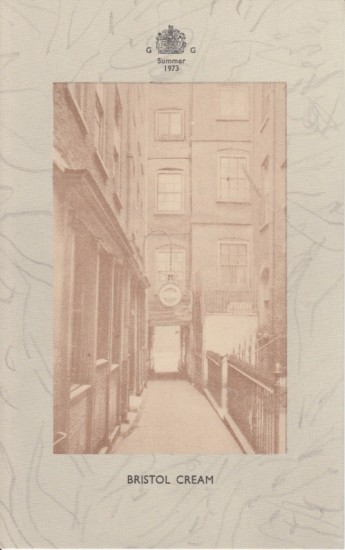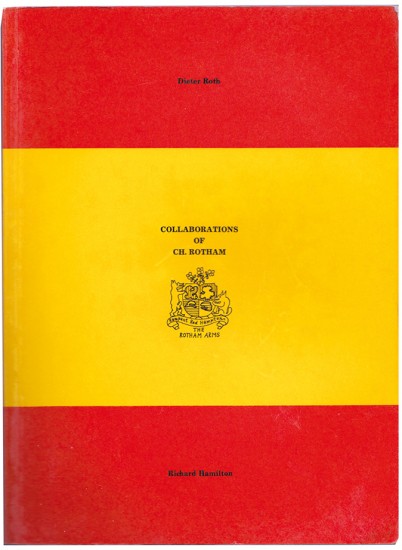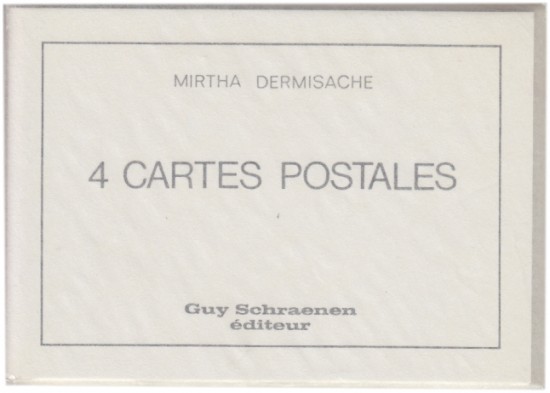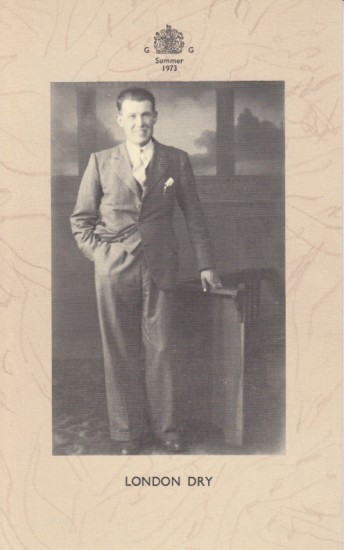Il Museo Pio-Clementino [Together with:] Il Museo Chiaramonti aggiunto al Pio-Clementino
Visconti, Giovanni Battista & Ennio Quirino
Roma. Da Ludovico Mirri / Da Luigi e Giuseppe Mirri / Da Gaspare Caparrone / Antonio d'Este e Gaspare Caparrone ... Con Privilegio Pontificio. 1782–1807
Sold
A complete set of the Museo Pio-Clementina with the additional volume Il Museo Chiaramonti.
Named for the Popes Clement XIV Ganganelli (1769 - 1774) and Pius VI Braschi (1775 - 1799) under whom the Papal collection of classical statuary was expanded in the eighteenth-century, the Museo Pio-Clementino was the product of an Enlightenment urge to form a museum in the modern sense. Donations by collectors and antiquaries and acquisitions due to the excavations being carried out near Rome had expanded a core collection, for the most part Greek, that was formed during the primacy of Julius II (1504 - 1513) and housed in the Cortile delle Statue. A modern museum, open to the public, with a duty for care of the collection and the possibility of its study was duly commissioned and the architecture entrusted to Alessandro Dori, Michelangelo Simonetti and Giuseppe Camporese.
Following the Treaty of Tolentino (1797) the major and best pieces were transported to Paris by Napoleon; the majority of the collection was restored subsequently after the Congress of Vienna and through the efforts of the sculptor Canova.
'Excellent ouvrage, tant pour le texte que pour les pl[anches].'. (Brunet).
Count Dimitri Petrovich Boutourlin (1763 - 1829) was a Russian diplomat and bibliophile and the director of the Imperial Library at St. Petersburg. Boutourlin was distinguished for having composed two magnificent libraries during his lifetime: Boutourlin's first library, composed of 4,000 printed books, was lost in the Moscow fire of 1812 following Napoleon's invasion; Boutourlin's second library was formed in Florence after his retirement from active life and was celebrated for 1,000 fifteenth-century printed books and a large number of manuscripts. The Museo Pio-Clementino presented here featured in Boutourlin's second library which was dispersed 1839 - 1841 in a number of sales.
[Cicognara 3467; Brunet V, 1313; see 'Catalogue de la Bibliothèque de son Exc. M. le Comte D. Boutourlin', Florence, 1831, no. 1829].
Named for the Popes Clement XIV Ganganelli (1769 - 1774) and Pius VI Braschi (1775 - 1799) under whom the Papal collection of classical statuary was expanded in the eighteenth-century, the Museo Pio-Clementino was the product of an Enlightenment urge to form a museum in the modern sense. Donations by collectors and antiquaries and acquisitions due to the excavations being carried out near Rome had expanded a core collection, for the most part Greek, that was formed during the primacy of Julius II (1504 - 1513) and housed in the Cortile delle Statue. A modern museum, open to the public, with a duty for care of the collection and the possibility of its study was duly commissioned and the architecture entrusted to Alessandro Dori, Michelangelo Simonetti and Giuseppe Camporese.
Following the Treaty of Tolentino (1797) the major and best pieces were transported to Paris by Napoleon; the majority of the collection was restored subsequently after the Congress of Vienna and through the efforts of the sculptor Canova.
'Excellent ouvrage, tant pour le texte que pour les pl[anches].'. (Brunet).
Count Dimitri Petrovich Boutourlin (1763 - 1829) was a Russian diplomat and bibliophile and the director of the Imperial Library at St. Petersburg. Boutourlin was distinguished for having composed two magnificent libraries during his lifetime: Boutourlin's first library, composed of 4,000 printed books, was lost in the Moscow fire of 1812 following Napoleon's invasion; Boutourlin's second library was formed in Florence after his retirement from active life and was celebrated for 1,000 fifteenth-century printed books and a large number of manuscripts. The Museo Pio-Clementino presented here featured in Boutourlin's second library which was dispersed 1839 - 1841 in a number of sales.
[Cicognara 3467; Brunet V, 1313; see 'Catalogue de la Bibliothèque de son Exc. M. le Comte D. Boutourlin', Florence, 1831, no. 1829].
8 vols. Large folio. (620 x 445 mm). Each vol. with half-title, printed title with large engraved vignette, frontispiece Papal portrait, leaf with publisher's dedication, preface and text; vol. I: large folding plan and 54 plates, numbered I - LII + A and B; vol. II: 54 plates numbered I - LII + A and B; vol. III: 53 plates numbered I - L + A, B and C; vol. IV: 46 plates numbered I - XLV (including XIX* and two plates taking two numbers each) + A and B; vol. V: 48 plates numbered I - XLV + A, B and C; vol. VI: 63 plates numbered I - LXI + A and B; vol. VII: 53 plates numbered I - L (including *XLIII) + A and B; vol. VIII: 45 plates numbered I - XLIV + A. Plates engraved by various artists. Contemporary calf-backed marbled boards, banded spines with gilt decorative tooling and black morocco labels in seven compartments.
#43160
